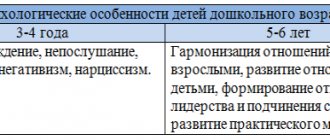V. Vasnetsov “The Sleeping Princess”
V. Vasnetsov “The Sleeping Princess” (1900-1926)
The famous Russian artist Viktor Vasnetsov (1848-1926) painted this painting, “The Sleeping Princess,” which is familiar to us from childhood, for almost 40 years, but never finished it. The general public saw the work after the author’s death, at an exhibition in 1927. The film was a huge success and was recognized as one of Vasnetsov’s best works.
“The Sleeping Princess” is part of the “Poem of Seven Tales” cycle, and the plot is based on “The Tale of the Dead Princess and the Seven Knights” by Alexander Pushkin and “The Sleeping Beauty” by Charles Perrault. The artist chose the episode when the young princess pricked herself with a spindle and fell into a long hundred-year sleep, and her entire kingdom fell asleep with her.
Vasnetsov is considered one of the first master painters who brought to life on his canvases the magical world of Russian fairy tales and epics. The artist's interest in ancient Russian culture arose while studying at a theological school and then at a seminary, where he studied the lives of saints, chronographs, chronicles, parables and folklore. Vasnetsov wrote about himself: “I am a storyteller, a writer of epics, a guslar of painting.”
In all the artist’s paintings, contemporaries noted the highest decorative skill of the artist, the variety of colors, ornaments and patterns in the traditions of Russian architecture.
It should be noted that during his life, Viktor Vasnetsov made contributions to a wide variety of areas of art - theatrical scenery and costumes, architecture and applied arts.
He created illustrations for the works of Pushkin and Lermontov, and devoted over ten years of his creative life to working on the paintings of the Vladimir Cathedral in Kyiv. He also created sketches of the main facade of the Tretyakov Gallery in Lavrushinsky Lane in Moscow. Task for the child:
Ask your child: who and what does he see in the picture? Let him remember the fairy tale? What colors did the artist use to paint the picture?
M. Caravaggio “Fruit Basket”
M. Caravaggio “Fruit Basket” (1597)
The Italian artist Michelangelo de Caravaggio (1571-1610) is considered a reformer of European painting in the 17th century, the founder of realism and one of the greatest masters of Baroque painting.
“Fruit Basket” was painted by a 22-year-old artist more than 400 years ago and is considered the first still life painting in the history of painting. The young master forever went down in history as the founder of this genre, innovative for that time.
What kind of genre is still life?
This is an image of objects and things that relate to everyday life and everyday life of people. Still lifes, as a rule, do not contain any plot, except for the composition itself, assembled from two or more objects. The artist's task is to capture objects as they are. In this case, Caravaggio tried to depict the fruit as naturally as possible. Some of them look like they were just picked and carelessly thrown into a basket. In some places the image even resembles a photograph. Task for the child:
Ask your child: what does he see in the picture? What fruits are shown on it? What color are they?
I. Aivazovsky “Rainbow”
I. Aivazovsky “Rainbow” (1873)
The painting “Rainbow” is one of 4,000 works that the outstanding 19th century marine painter Ivan Aivazovsky (1817-1900) dedicated to the water element. On his canvases he depicted more than a dozen seas on different continents. In total, during his life the artist created about 6,000 thousand paintings.
Aivazovsky was born in Crimea and fell in love with the sea from early childhood. He could sit on the shore for hours, peer into every detail and admire the beauty of the seascape. In the future, this allowed him to very realistically depict the various states of sea water.
All the artist’s work is colored with the features of romanticism.
Therefore, the water element in Aivazovsky’s canvases is most often stormy and restless, just like in the painting “Rainbow”. This is the story of one crash with a happy ending. The small ship, unable to withstand the blows of the elements, tilted treacherously and was about to sink. People, in the hope of salvation, moved into tiny boats and continue to withstand the menacing storm. In a doomed situation, the painter gives hope for the best: he depicts a small seagull, which seems to show people the path to salvation. And the rainbow is a favorite motif of romantics and a biblical symbol of the end of the flood. Task for the child:
Let the child look carefully at the picture and find the seagull and the rainbow. What's happening at sea? What colors is the work done in?
V. Van Gogh “Starry Night”
V. Van Gogh “Starry Night” (1889)
The painting “Starry Night” is another masterpiece, the author of which, the Dutch artist Vincent Van Gogh (1853-1890), considered his failure. The work was recognized as a cult work after a while. The work even became an “icon” for the Expressionists. Expressionist artists did not strive to reproduce the world around them, but to convey to the viewer their own emotional state using form and color.
Van Gogh painted “Starry Night” while he was in a mental hospital in the south of France. Patients were forbidden to go outside, so the artist created it in the bedroom, looking out the window. The stars evoked special sensations in Van Gogh. He wrote to his brother: “Looking at the stars always makes me dream.”
The artist created the picture in a state of heightened perception of reality. This, according to art historians, as well as the power of imagination allowed him to see the night sky as no one had seen it before.
But the picture seems implausible only at first glance.
The vortex flows in the night sky, which Van Gogh depicted, according to researchers, are nothing more than turbulence, and the largest star with a white halo in the picture is Venus. This planet could be observed in the south of France just in May 1889. Assignment for the child:
Ask your child: what does he see in the picture? What surprises him when he looks at the work? What colors can he name?








